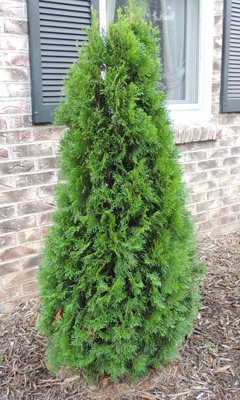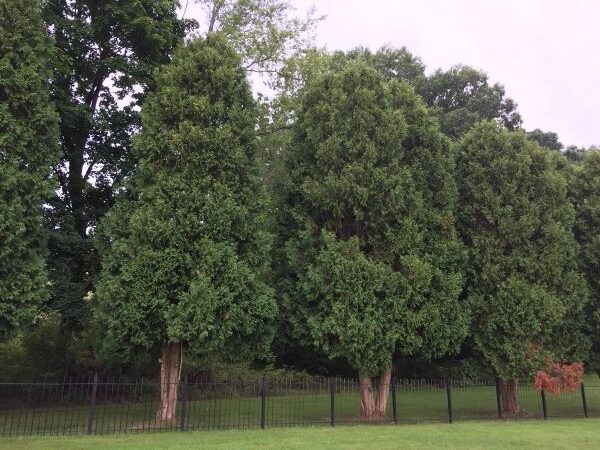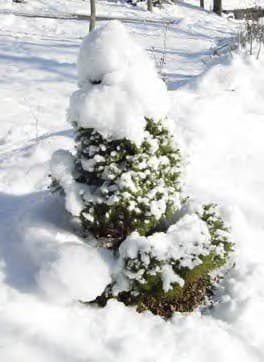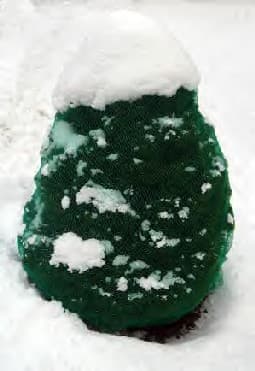How to Grow and Care for Arborvitae Trees

About Growing Arborvitaes in Your Yard
Belonging to the evergreen family, Arborvitae trees are native to eastern Asia and North America. They are identified by their small, scale-like leaves on flattened branches. Growing arborvitaes is easy. Your challenge is to keep them trimmed to the size you desire.
There are many varieties of Arborvitaes, with the largest growing over 60-65 feet. Among the most common are the Oriental Arborvitae from China, American Arborvitae, Northern White Cedar, and Western Red cedar, which originated in North America. All varieties of Arborvitae are classified as members of the Cypress family.
Coming in a variety of shapes and sizes, homeowners love aromatic Arborvitae trees. They are one of the most popular foundation plants. They are also extremely popular as fencing or hedgerow plants, thanks to their thick foliage and fast-growing habit.
Arborvitaes are easy to grow. Once planted, established plants require little care and maintenance. Annual pruning keeps the plants in a desirable shape. Arborvitae benefits from providing some winter protection against damage from ice and snow, as well as foraging deer. If Deer are in your area, mesh net protection is needed in the winter. When deer food supplies get low, they turn to this evergreen for survival.
Did you know? Arborvitae leaves were once used as a remedy for Rheumatism.
A tree or a shrub? Arborvitaes are classified as trees. But, it is okay, if you refer to them as shrubs or bushes.
Long-lived: The average life expectancy of an arborvitae tree is 50 to 150 years. In later years, the tree begins to look unsightly.
Plant height: 60 – 65 feet, if left untrimmed.
Plant Hardiness Zones: 3 – 7
Botanical Name: Cupressaceae, Thuja occidentalis
Varieties of Arborvitaes
Arborvitae is native to North America and eastern Asia; The most common varieties include:
Oriental Arborvitae
American Arborvitae, also called Giant Arborvitae
Emerald Arborvitae
Globe Arborvitae
Arborvitae Tree Propagation
Arborvitae trees are grown from seeds. The plants produce small, white flowers, giving way to red berries containing seeds. Young seedlings take a few years to grow into a suitable size for landscaping uses. As a result, most homeowners buy established arborvitae trees from a garden store.
Also, Arborvitaes are grown by rooting cuttings. First cut a 4 – 5 inch branch of new growth. Then, strip away the lower leaves. Plant the cutting in coarse, well-draining sand. Keep the soil moist.
Planting and transplanting Azaleas is best done in the early spring or early fall. When transplanting, replant the trees at the same level in the ground as they were in their original location. Smaller trees transplant best.

How to Grow Arborvitaes
Arborvitae trees are easy to grow and maintain. Established trees thrive for many years. The plants tolerate both acidic and alkaline soils. They prefer slightly acidic soil, and grow in a variety of soils, from clay to sandy loam. Moist, well-draining soil is preferred, but they will tolerate extremes. Arborvitae grows well in full sun or partial shade.
Most trees are grown as foundation plants around homes and buildings, or a hedgerow or fence rows. After selecting a location, dig a hole deep and wide. Mix generous amounts of compost with soil from the hole. Set the plant in the hole and fill it with soil and compost. Peat moss works well if you do not have any compost. Lightly tamp the soil lightly. Water generously after planting. Promote new root growth, by keeping the soil moist for the first few weeks after transplanting.
Mulch heavily around plants, to help retain soil moisture, and for a neat and tidy appearance.
Ideal Soil pH: 6.0- 8.0.
Pruning Arborvitae Trees
Once established, these trees grow with little care for many years. The biggest task is pruning. While people tend to prune them a few times a year, pruning is best done once a year, in the fall or early winter. If pruned in the summer, the tips of the pruned branches can turn an unsightly brown. If pruning can not be done in the fall or winter, do so early in the season, while new growth is still appearing.


Winter Protection
In cold climates, it’s beneficial to provide winter protection. Snow and ice buildup can damage or break individual branches, or the whole tree. Shrub protection against foraging deer, and rabbits is also important.
Many people use burlap to cover the plants. It’s effective but unsightly. It can also cause mold and mildew on the plant.
Another alternative is heavy-duty, multi-strand netting. The netting is made of UV-protected material and will last for years. Green netting results in barely visible protection against animals, as well as winter protection from breakage of individual branches, when snow and ice buildup is a problem. It offers good air circulation, minimizing the likelihood of plant molds.
Insects and Plant Disease
A variety of animals feed on Arborvitae, especially in the winter months when other food sources are scarce. They include deer, rabbits, mice, and other rodents.
Occasional insect problems can occur from mites and bagworms. Use insecticides only if necessary.
Protection from Deer
When other sources of food become scarce in the winter, deer turn to evergreen plants for survival. Protect arborvitaes from browsing deer, and winter snow and ice damage, by using pest netting over the plants. They come in convenient bags, sheets, and bulk sizes.
Diseases Affecting Arborvitae
The most common plant problems are molds and mildew, often caused by cool, damp weather. Drowning of roots can also occur in wet weather.
Cankers and sun scorch are also an occasional problem.
Related Articles
Also, people who read this article will like:
Also see: Cedar Shrubs
How to grow your favorite shrub
Buy Arborvitae Trees and Cedar Shrubs – Live trees, bushes, and shrubs, hundreds of varieties
Please support our site. Shop for:
- rmmatthews100@hotmail.com
- 585-721-6528
- Rochester, NY
©1999-2024 GardenersNet.Com, All Rights Reserved

